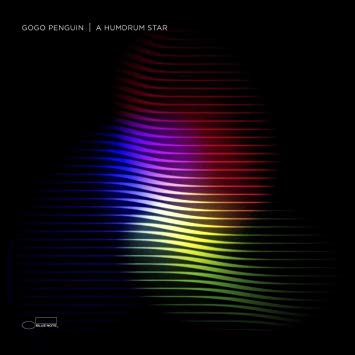GoGo Penguin, the piano trio from Manchester UK that has received a great deal of attention since its debut in 2012, utilizes the services of sound engineer Joe Reiser. Reiser began working with (joined?) the group with the release of their second album 2.0, along with bassist Nick Blacka, another essential element who joined at the same time. Reiser produced both 2.0 and the group’s recent album, Humdrum Star, sharing production with Brendan Williams. Reiser is generally acknowledged as the band’s fourth member, and integral to the band’s live sound as well as to their recording process.
The role of the audio engineer and of technical elements is now a part of some modern jazz piano trios’ bag of tricks. Ever since Esbjorn Svensson Trio utilized effects created by both the band and by their engineer Ake Linton, the manipulation of sound and the insertion of sounds that do not organically emanate from one of the three instruments in the trio is not uncommon. EST also referred to Linton as a fourth member of the trio, such was his influence on the group’s overall sound and vibe.
For groups that are able to integrate these sonic ideas into the warp and woof of their work, the rewards for the listener can be large, but there is risk of becoming schlocky and creating sounds that will sound thoroughly dated as little as ten years later.
The band did try to create some of their effects organically, by changing the instruments or the way of recording them rather than putting more special effects on sounds after they had been recorded. The result can be magic, and reminiscent of the approach that Robbie Robertson says was used by The Band in recording Music From Big Pink and their second album as well. He said it changed things to actually commit so fully to the effect they were creating that they couldn’t easily change it in post production.
“We started with this idea of ‘inner and outer’, and opposing things that are essentially the same,” says (drummer) Rob Turner. “A lot of the textures and sounds do come from the electronic writing, but Brendan also wanted everything to be made as organically as possible.” And so when practical the group used props such as tape measures and chain links to bring various sounds from their instruments.
Humdrum Star comes across on tracks such as the opening “Prayer” and “Bardo” like a lost instrumental Radiohead album. Radiohead stretched the sonic boundaries of rock and popular music with their turn of the century releases Kid A and Amnesiac, creating music that had more in common with Stockhausen and John Cage than the Beatles. It was inevitable that the group’s sonic adventurousness would bleed back into other genres like classical and jazz.
Add to that Manchester’s history as a center of indie music and of influential bands like Joy Division, A Certain Ratio, New Order, and auteurs like producer Martin Hannett and Factory Records creator Tony Wilson, and it becomes much clearer that GoGo Penguin was a project of karmic proportions, bringing together the right combination of musicians in the right city at the right moment that made the band seem all but inevitable.
They acknowledge a debt as well to Aphex Twin and of course Brian Eno–listen to the listless, drifting piano fragment in front of the trancelike bass and lower piano lines on “A Hundred Moons.” Ultimately the influence is one of atmospherics more than rhythms even though the band does frequently use the jittery beats of jungle and drum n’ bass.
Humdrum Star takes the group’s ideas and pushes them into new areas that force the listener to grow along with the performers. GoGo Penguin make it a fun and fascinating ride.
